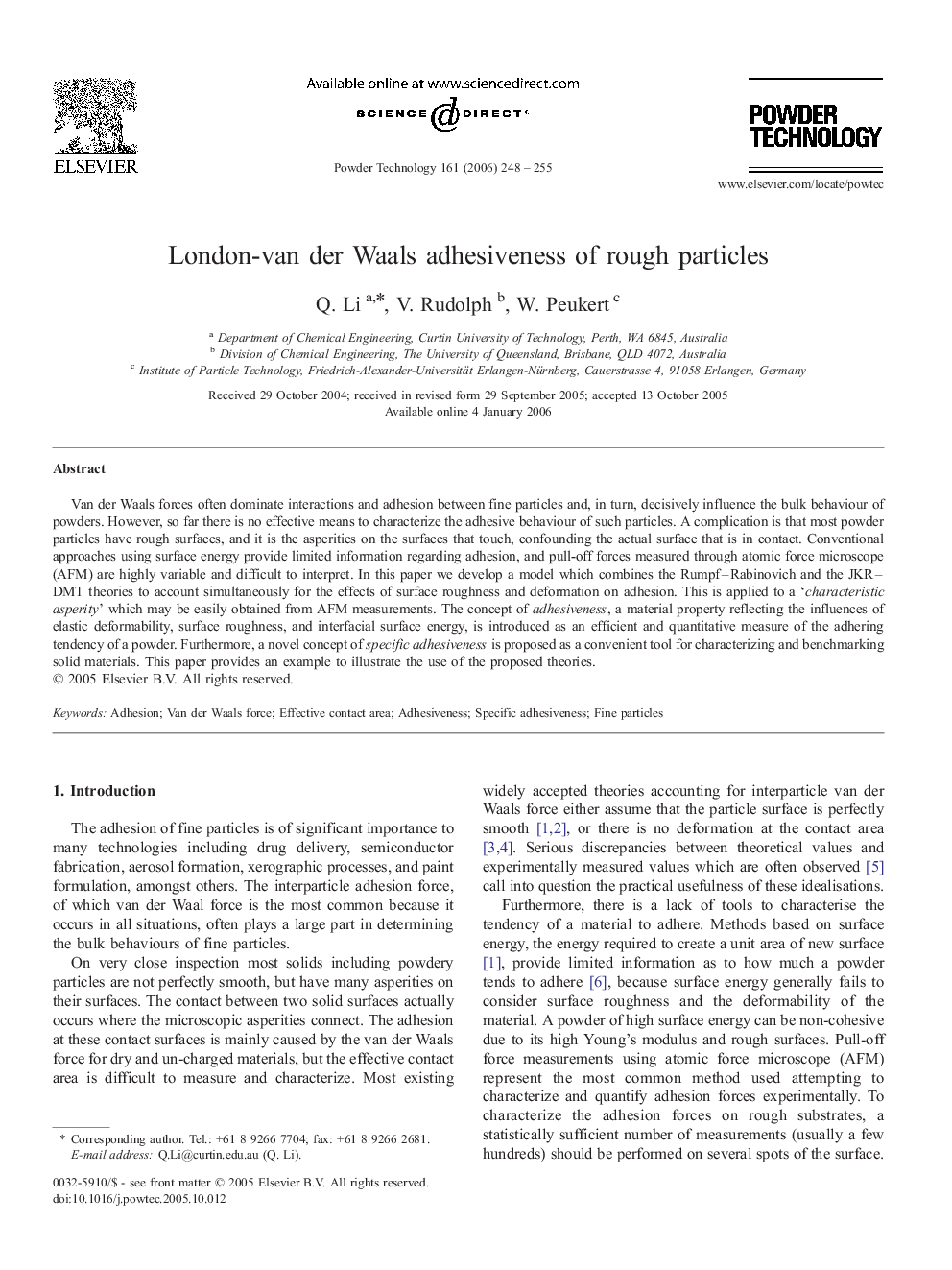| Article ID | Journal | Published Year | Pages | File Type |
|---|---|---|---|---|
| 239549 | Powder Technology | 2006 | 8 Pages |
Van der Waals forces often dominate interactions and adhesion between fine particles and, in turn, decisively influence the bulk behaviour of powders. However, so far there is no effective means to characterize the adhesive behaviour of such particles. A complication is that most powder particles have rough surfaces, and it is the asperities on the surfaces that touch, confounding the actual surface that is in contact. Conventional approaches using surface energy provide limited information regarding adhesion, and pull-off forces measured through atomic force microscope (AFM) are highly variable and difficult to interpret. In this paper we develop a model which combines the Rumpf–Rabinovich and the JKR–DMT theories to account simultaneously for the effects of surface roughness and deformation on adhesion. This is applied to a ‘characteristic asperity’ which may be easily obtained from AFM measurements. The concept of adhesiveness, a material property reflecting the influences of elastic deformability, surface roughness, and interfacial surface energy, is introduced as an efficient and quantitative measure of the adhering tendency of a powder. Furthermore, a novel concept of specific adhesiveness is proposed as a convenient tool for characterizing and benchmarking solid materials. This paper provides an example to illustrate the use of the proposed theories.
